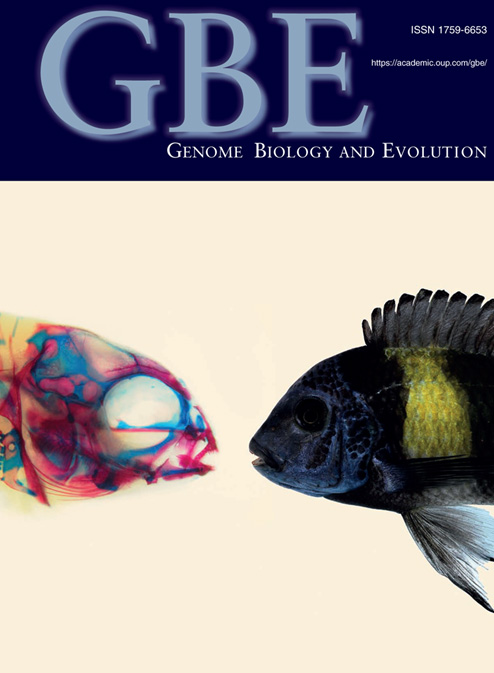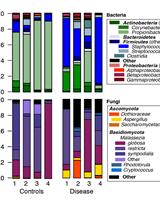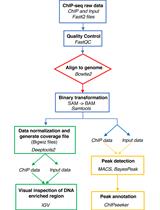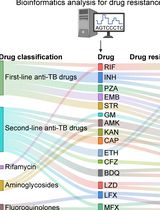- EN - English
- CN - 中文
Strand-specific Single-stranded DNA Sequencing (4S-seq) of E. coli genomes
大肠杆菌特异性单链DNA测序(4S-seq)
(*contributed equally to this work) 发布: 2019年08月05日第9卷第15期 DOI: 10.21769/BioProtoc.3329 浏览次数: 7479
评审: Elizabeth LibbyMichael TschernerTimo A Lehti
Abstract
Most bacterial genomes have biased nucleotide composition, and the asymmetry is considered to be caused by a single-stranded DNA (ssDNA) deamination arising from the bacterial replication machinery. In order to evaluate the relationship experimentally, the position and frequency of ssDNA formed during replication must be verified clearly. Although many ssDNA detection technologies exist, almost all methods have been developed for eukaryotic genomes. To apply these to bacterial genomes, which harbor a smaller amount of DNA than those of eukaryotes, more efficient, new methods are required. Therefore, we developed a novel strand-specific ssDNA sequencing method, called 4S-seq, for the bacterial genome. The 4S-seq method enriches ssDNA in the extracted genomic DNA by a dsDNA-specific nuclease and implements a strand-specific library using a biotin label with a customized tag. As a result, the 4S-seq is able to calculate the ssDNA content in each strand (Watson/Crick) at each position of the genome efficiently.
Keywords: Bacterial genome (细菌基因组)Background
Nascent and template strand tracking is an important approach to investigate bacterial genome evolution. Since biased mutations in bacterial genome arise from asymmetric replication machinery, DNA strands that have been exposed to a single-stranded state for a long time will accumulate more mutations. Several strand-specific sequencing technologies are available for eukaryotic genomes, with various selection strategies for nascent DNA (Hyrien, 2015). In general, the nascent DNA is caught by immunoprecipitation with BrdU (Karnani et al., 2010) or a combination of antibodies against strand-specific binding proteins (Yu et al., 2014). Other protocols utilize a customized label (Smith and Whitehouse, 2012) or an agarose gel trap (Mesner et al., 2011) to select nascent DNA of a certain size. However, these strand-specific sequencing technologies for eukaryotic genomes are not readily applicable to bacterial genomes because the BrdU incorporation efficiency or the amount of DNA is overwhelmingly low in bacteria. Therefore, we developed a novel 4S-seq method for the bacterial genome. Overall, the 4S-seq method is broadly divided into ssDNA enrichment and strand-specific sequencing steps (Figure 1). The ssDNA is enriched in the fragmented genomic DNA using a duplex-specific nuclease. The strand-specific sequencing is implemented using a biotinylated adapter with an exclusively unique designed tag. At this time, the library is prepared using a low input library preparation kit because a low amount of enriched ssDNA is expected. Sequenced reads are analyzed with a custom Perl script, and the ssDNA location and strand are calculated. The new 4S-seq method for the bacterial genome described here does not require specialized equipment and can be applied from plasmid to mega-scale genomes. This 4S-seq was applied to research investigating the relationship between a base compositional bias in a bacterial genome and a spontaneous mutation in ssDNA, and revealed that there is a strong correlation between ssDNA frequency and the mutation rate (Kono et al., 2018). We show the protocol optimized for Escherichia coli.

Figure 1. Overview of the 4S-seq protocol. Steps A-C: purification of the sheared genomic DNA from E. coli cultures; Steps D-F: preparation of dephosphorylated ssDNA and the phosphorylated adapter; Steps G-J: purification of tagged ssDNA fragments using streptavidin beads; Step K: preparation of the library for the Illumina sequencer.
Materials and Reagents
- 1.5 ml tubes (Eppendorf, catalog number: 30108051)
- 0.2 ml tubes (NIPPON GENE CO., LTD., catalog number: BPB79211)
- 1000 ml pipette tips (Sorenson, catalog number: 34000)
- 200 ml pipette tips (NIPPON GENE CO., LTD., catalog number: FG-302RS)
- 10 ml pipette tips (Sorenson, catalog number: 37660)
- TapeStation D1000 Screen Tape (Agilent Technologies, catalog number: 5067-5582)
- 14 ml tube (CORNING, catalog number: 352057)
- 50 ml tube (Greiner Bio-One, catalog number: 227281)
- milliTUBE 1 ml AFA Fiber (Covaris, catalog number: 520131)
- PCR Clean-up Column
- E. coli strains to be analyzed
- BactoTM Tryptone (Thermo Fisher Scientific, catalog number: 211705)
- BactoTM Yeast Extract (Thermo Fisher Scientific, catalog number: 212750)
- NaCl (FUJIFILM Wako Pure Chemical Corporation, catalog number: 192-13925)
- Appropriate antibiotics
- Milli-Q water
- 10x PBS (NIPPON GENE CO., LTD., catalog number: 314-90185)
- NucleoSpin® Gel and PCR Clean-up (MACHEREY-NAGEL, catalog number: 74069.250)
- Binding Buffer NTI
- Wash Buffer NT3
- Elution Buffer NE
- NucleoSpin® Gel and PCR Clean-up Columns
- 2 ml Collection Tube
- Buffer NTC (MACHEREY-NAGEL, catalog number: 740654.100)
- QubitTM dsDNA BR Assay Kit (Thermo Fisher Scientific, catalog number: Q32850)
- Duplex-specific nuclease (Evrogen, catalog number: EA001)
- DSN enzyme
- DSN storage buffer
- 10x DSN master buffer
- TapeStation D1000 Reagents (Agilent Technologies, catalog number: 5067-5583)
- 0.5 M EDTA (FUJIFILM Wako Pure Chemical Corporation, catalog number: 311-90075)
- Agencourt AMPure XP (BECKMAN COULTER Life Sciences, catalog number: A63881)
- EtOH (FUJIFILM Wako Pure Chemical Corporation, catalog number: 054-7225)
- Sucrose (FUJIFILM Wako Pure Chemical Corporation, catalog number: 196-00015)
- Lysozyme (FUJIFILM Wako Pure Chemical Corporation, catalog number: 123-06721)
- 100 mg/ml RNase A (QIAGEN, catalog number: 19101)
- 1 M Tris-HCl (pH 8.0) (NIPPON GENE CO., LTD., catalog number: 312-90061)
- 1 M Tris-HCl (pH 7.5) (NIPPON GENE CO., LTD., catalog number: 312-90221)
- FastAP Thermosensitive Alkaline Phosphatase (Thermo Fisher Scientific, catalog number: EF0651)
- FastAP Thermosensitive Alkaline Phosphatase
- 10x FastAP Buffer
- Oligo nucleotides
- Adapter_N8B 5′-GGGAANNNNNNNNTAGGGATAACAGGGTAATAGGAGGA-3′ (Eurofins Genomics, custom made)
- 1stAdapter_primer 5′-TCCTCCTATTACCCTGTTATCCCTA-3′ (Eurofins Genomics, custom made)
- T4 Polynucleotide Kinase (T4 PNK) and 10x T4 PNK buffer (NEW ENGLAND BioLab, catalog number: M0201S)
- 100 mM ATP (TAKARA BIO INC., catalog number: 4041)
- T4 DNA ligase and 10x T4 DNA ligase buffer (Enzymatics, catalog number: L6030-HC-L)
- Dynabeads MyOne Streptavidin C1 (Invitrogen, catalog number: DB65001)
- Tks Gflex DNA Polymerase (Gflex) and 2x Gflex PCR Buffer (TAKARA BIO INC., catalog number: R060A)
- I-Sce I and 10x CutSmart buffer (NEW ENGLAND BioLab, catalog number: R0694S)
- SMARTer ThruPLEX DNA-Seq Kit (TAKARA BIO INC., catalog number: RB4674)
- (Optional) Low input Library Prep Kit (Clontech Laboratories, Inc., catalog number: 634947)
- Qubit ssDNA Assay Kit (Thermo Fisher Scientific, Invitrogen, catalog number: Q10212)
- NextSeq 500 High Output Kit (75 cycles) (Illumina, Inc., catalog number: TG-160-2005)
- Luria-Bertani broth (LB) (see Recipes)
- TE buffer, pH 8.0 (see Recipes)
- Lysis buffer (see Recipes)
- 80% EtOH (see Recipes)
- 2x Binding and Washing (B&W) buffer (see Recipes)
- 1x B&W buffer (see Recipes)
Equipment
- 200 ml flask (Sansyo Co., ltd, catalog number: 82-0086)
- Pipettes (GILSON, catalog number: F167380)
- Digital photometer (TAITEC, catalog number: 0040889-000)
- Milli-Q water purification system (Merck, model: Direct-Q UV 5)
- Autoclave (TOMY, model: LSX-300)
- Centrifuge (TOMY, model: MX-307)
- Incubator (TAIYO COMPANY CO., LTD, catalog number: 2-6795-02)
- CovarisTM M220 Focused-ultrasonicatorTM Instrument (Thermo Fisher Scientific, catalog number: 4482277)
- Qubit 3.0 Fluorometer (Thermo Fisher Scientific, catalog number: Q33216)
- Heat block (WAKENBTECH CO., LTD, catalog number: WKN-9603)
- Thermal Cycler (LifeECO ver2.0) (NIPPON Genetics Co., Ltd, catalog number: TC-96GHbC)
- Agilent 2200 TapeStation (Agilent Technologies, catalog number: G2965AA)
- Magnetic stand for 0.2 ml tube (NIPPON Genetics Co., Ltd, catalog number: FG-SSMAG2)
- Magnetic stand for 1.5 ml tube (Thermo Fisher Scientific, catalog number: 12321D)
- NextSeq 500 instrument (Illumina, Inc., catalog number: SY-415-1001)
Software
- bcl2fastq (v. 2.18.0.12) (https://support.illumina.com/sequencing/sequencing_software/bcl2-fastq-conversion-software.html)
- BWA (v. 0.7.1-r1034) (http://bio-bwa.sourceforge.net)
- Samtools (v. 1.2) (http://samtools.sourceforge.net)
- FastQC (v. 0.10.1) (https://www.bioinformatics.babraham.ac.uk/projects/fastqc/)
Procedure
文章信息
版权信息
© 2019 The Authors; exclusive licensee Bio-protocol LLC.
如何引用
Masuda, T., Kono, N., Tomita, M. and Arakawa, K. (2019). Strand-specific Single-stranded DNA Sequencing (4S-seq) of E. coli genomes. Bio-protocol 9(15): e3329. DOI: 10.21769/BioProtoc.3329.
分类
微生物学 > 微生物遗传学 > DNA > DNA 测序
分子生物学 > DNA > DNA 测序
您对这篇实验方法有问题吗?
在此处发布您的问题,我们将邀请本文作者来回答。同时,我们会将您的问题发布到Bio-protocol Exchange,以便寻求社区成员的帮助。
Share
Bluesky
X
Copy link













